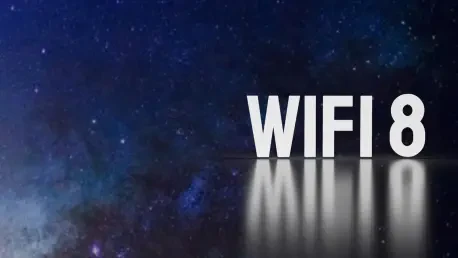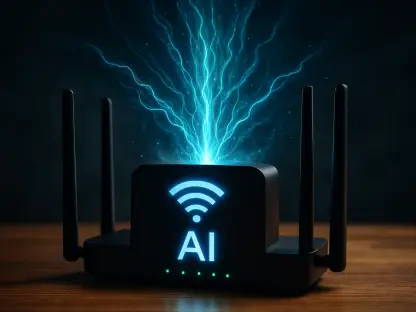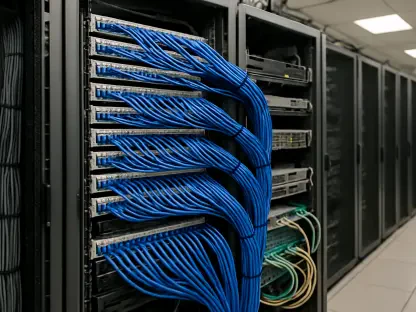The progression in wireless technology, particularly in the realm of Wi-Fi, has been remarkable over the past few years, prompting consumers and industry experts alike to ponder the right moment for an upgrade. While Wi-Fi 6 made its debut in 2019, it hasn’t been universally adopted, as many devices still support this standard to this day. This creates a dilemma for consumers contemplating an upgrade, especially with Wi-Fi 7’s arrival expected any moment. With discussions of Wi-Fi 8 already surfacing, there is a growing yet prudent debate on whether to hold off on upgrading. Indications are strong that Wi-Fi 8 won’t reach the market before mid-2028, thus enticing many to take the plunge now with Wi-Fi 7. This article assesses the current state of Wi-Fi technologies and offers informed advice on whether users should transition now or remain patient for future standards.
Understanding the Wi-Fi Upgrade Timeline
Forearmed with a historical perspective, the timeline of Wi-Fi standards sheds light on how and when technology has intermittently advanced. Significantly, Wi-Fi 6 entered the scene six years ago and continues to command familiarity among consumers and businesses. Wi-Fi 6E, which arrived a year later, expanded on the same technology but with added operational bandwidth. The real contemplation begins with the awaited certification for Wi-Fi 7. While Wi-Fi 7 certification was slated to commence in 2024, it presents an evolution, not a revolution, in terms of the technology’s capabilities. Despite the rapid unveiling of new standards, adoption across devices defies immediate transition and is typically gradual, revealing the reluctance of some industry players, including prominent names like Apple, which delayed incorporating Wi-Fi 6E into its arsenal.
Wi-Fi 8 enters the conversation with its promise of even further refinements; nevertheless, the proposed timeline for its development posits that it will take at least another three years before retail products become available. This lengthy gestation period is due to extensive processes of drafting, revising, and finalizing specifications, thereby cautioning consumers against waiting for Wi-Fi 8. The pragmatic choice for many may be to engage with Wi-Fi 7, especially if weighed against the drawn-out wait inherent with Wi-Fi 8’s arrival. The consistent pace of developments has led experts to advise individuals to weigh the tangible gains Wi-Fi 7 could offer in relation to their current connectivity demands.
Evaluating Wi-Fi 8’s Potential and Wi-Fi 7’s Immediate Benefits
Wi-Fi 8, while promising significant refinements, does not appear to introduce groundbreaking capabilities over its predecessor, Wi-Fi 7. The preliminary specifications depict a continuation of many Wi-Fi 7 features such as support for eight spatial streams delivering an aggregate bandwidth of 23Gbps. This continuity places focus on consistency in performance, aiming for improvements in channel management and efficiency. Dynamic Sub-Channel Operation (DSO), a potential inclusion in Wi-Fi 8, could enable routers to dynamically allocate resources to different devices, optimizing performance with anticipated throughput increases by 80%. Such innovations aim at addressing inefficiencies seen in prior systems, varying Wi-Fi’s impact based on network structure.
The features exclusive to Wi-Fi 8, notably Coordinated Beamforming (Co-BF) and Coordinated Spatial Reuse (Co-SR), endeavor to capture more precise signal paths for individual devices, reducing interference and maximizing throughput. Unfortunately, while these features hold promise, they largely benefit mesh Wi-Fi setups, which remain less common in domestic environments. Single-router households may find a limited impact from these advances as the central benefits of Co-BF and Co-SR rely on a mesh-based infrastructure to function effectively. Thus, for many consumers, Wi-Fi 8 doesn’t necessarily promise a substantial step ahead for personal use and appears as an incremental adjustment rather than a radical transformation.
Realistic Considerations Before Committing to Wi-Fi 8
The expectations for Wi-Fi 8 should remain tempered, with attention to real-world applications posing questions about its anticipated performance. Situational challenges influence network capabilities, such as interference from unsuspecting physical structures or a myriad of other radio waves. Such hindrances can obstruct the optimum utilization of new Wi-Fi standards, often making theoretical improvements limited in practice. Moreover, potential compatibility issues can emerge, where only devices supporting the exact Wi-Fi version fully leverage its merits. Wi-Fi 8, while targeting improvements in router operations and efficiencies, might not lead to an immediate positive influence on end-user devices but could instead slightly enhance network fundamentals.
The emphasis remains on refining existing capabilities and optimizing what has already been set with Wi-Fi 7, encouraging an outlook less focused on Wi-Fi 8’s prospects alone. Consumers using single-router configurations might experience negligible differences compared to mesh networks, where Wi-Fi 8’s features are more effectively activated. As such, advancing to Wi-Fi 7 presently seems to cater better to common household needs, promising immediate technological elevation without banking exclusively on prospective standards.
Choosing Wisely: The Benefits of Upgrading to Wi-Fi 7
Understanding the history of Wi-Fi standards provides insight into the evolution of this technology. Wi-Fi 6 made its debut six years ago and has since become familiar to both consumers and businesses. A year later, Wi-Fi 6E arrived, enhancing the original technology with additional bandwidth capabilities. Now, anticipation is building for Wi-Fi 7, whose certification is expected to start in 2024. However, it is important to note that Wi-Fi 7 represents an evolution rather than a groundbreaking shift in Wi-Fi technology. Even with the release of new standards, adoption across devices tends to be gradual. Some industry giants, like Apple, have been particularly slow in incorporating technologies like Wi-Fi 6E into their products.
Meanwhile, Wi-Fi 8 is on the horizon, promising further enhancements. Unfortunately, the timeline for its development suggests it will take at least three more years before we see products available to consumers. This delay is due to the complex processes involved in drafting and finalizing its specifications. Therefore, experts often advise against waiting for Wi-Fi 8. The pragmatic approach for most users is to transition to Wi-Fi 7, given the uncertain timeline for Wi-Fi 8. Taking into account the steady pace of advancements, experts encourage users to consider the tangible improvements Wi-Fi 7 might offer based on their current connectivity needs.









